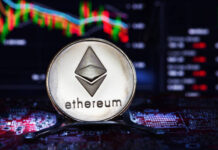- All-items inflation rose to 1.9% year-over-year in March from 1.5% in February, which was the slowest in more than two years
- Energy price deflation continued to ease, with gasoline prices now little changed from a year ago
- Food prices continued to trend higher and are now running at their fastest year-over-year pace since 2015
- CPI excluding food and energy continued to edge lower; March’s 2.0% pace was the slowest in a year
Headline inflation was a touch higher than expectations, though core inflation came in slightly below consensus in March. It’s the latter that matters more for the Fed, and with little sign of momentum in underlying inflation, it’s hard to see the central bank getting back to raising rates anytime soon. We are seeing some upward trends—prices for non-food and energy commodities are no longer falling, for the first time in several years—but those items haven’t been enough to move the inflationary needle. Meanwhile, headline CPI is likely to be capped by the energy component. While oil prices are up roughly US$20/barrel year-to-date, they remain slightly below year-ago levels. We expect that will remain the case through summer. All told, a benign inflationary environment gives the Fed plenty of time to be patient.












